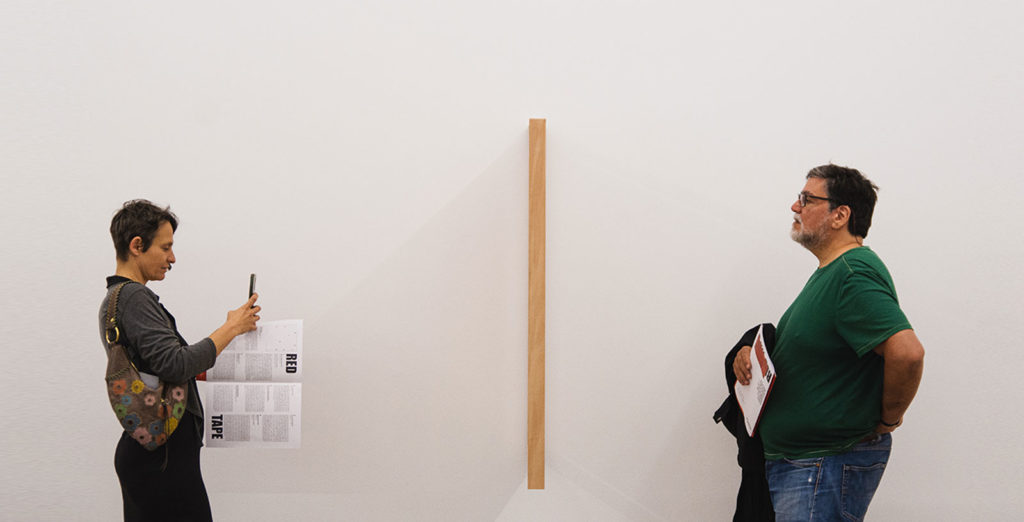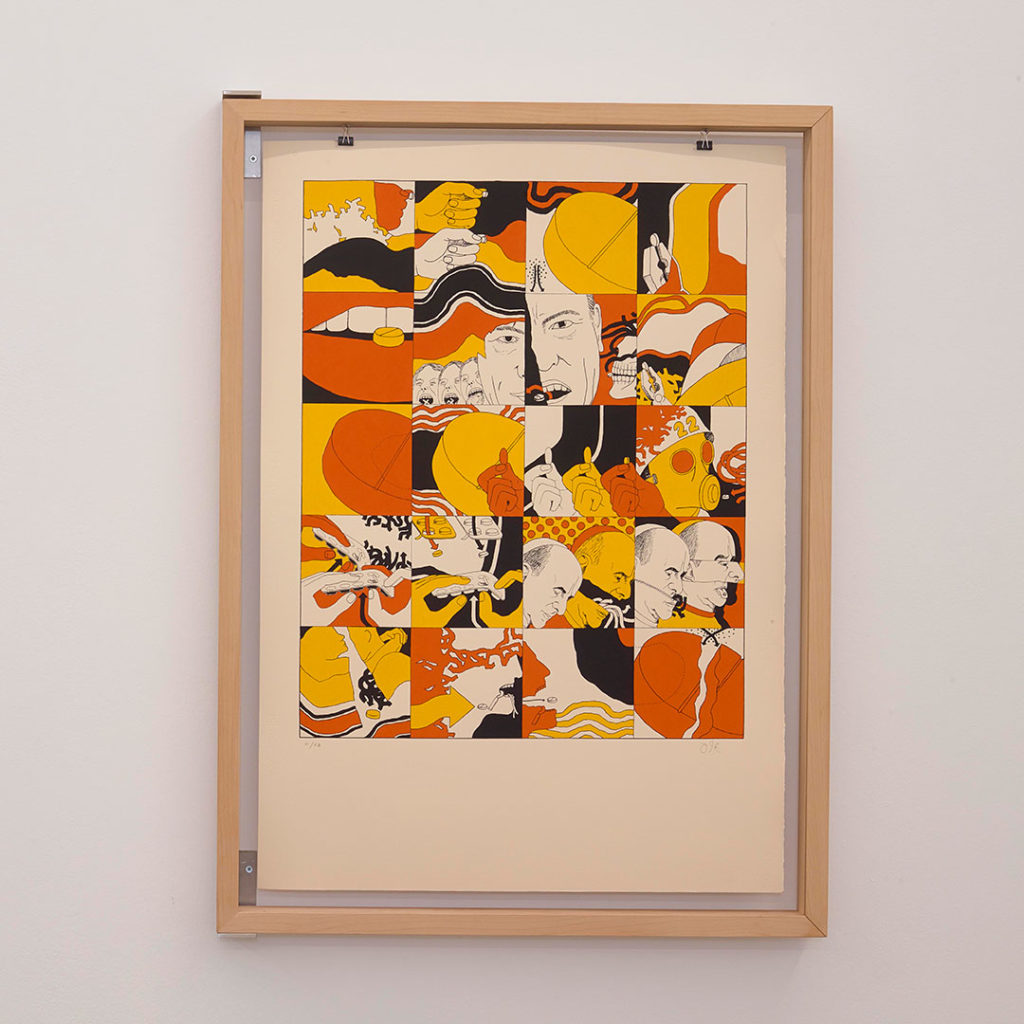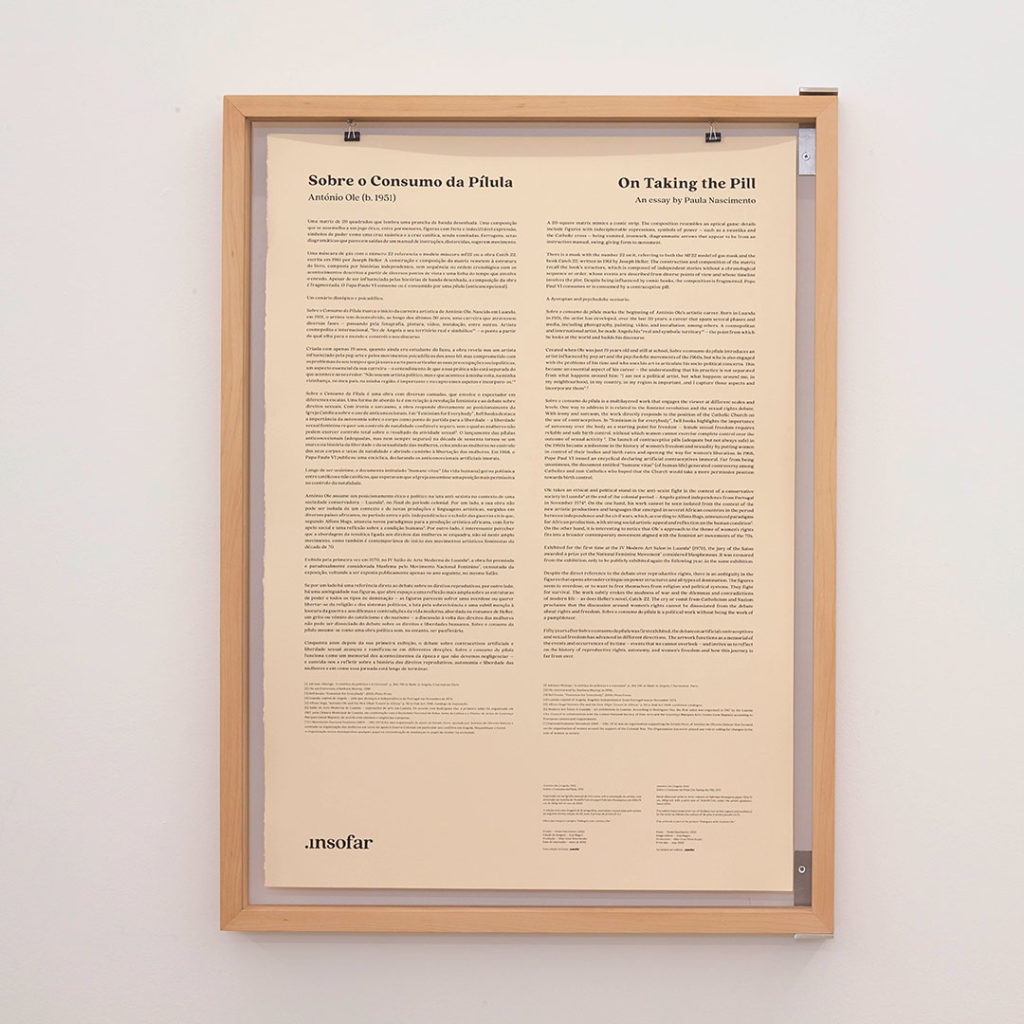Created when Ole was just 19 years old and still at school, Sobre o consumo da pílula introduces an artist influenced by pop art and the psychedelic movements of the 1960s, but who is also engaged with the problems of his time and who uses his art to articulate his socio-political concerns. This became an essential aspect of his career – the understanding that his practice is not separated from what happens around him: “I am not a political artist, but what happens around me, in my neighbourhood, in my country, in my region is important, and I capture those aspects and incorporate them”.[2]
Sobre o consumo da pílula is a multilayered work that engages the viewer at different scales and levels. One way to address it is related to the feminist revolution and the sexual rights debate. With irony and sarcasm, the work directly responds to the position of the Catholic Church on the use of contraceptives. In “feminism is for everybody”, bell hooks highlights the importance of autonomy over the body as a starting point for freedom – female sexual freedom requires reliable and safe birth control, without which women cannot exercise complete control over the outcome of sexual activity [3]. The launch of contraceptive pills (adequate but not always safe) in the 1960s became a milestone in the history of women’s freedom and sexuality by putting women in control of their bodies and birth rates and opening the way for women’s liberation. In 1968, Pope Paul VI issued an encyclical declaring artificial contraceptives immoral. Far from being unanimous, the document entitled “humane vitae” (of human life) generated controversy among Catholics and non-Catholics who hoped that the Church would take a more permissive position towards birth control.
Ole takes an ethical and political stand in the anti-sexist fight in the context of a conservative society in Luanda[4] at the end of the colonial period – Angola gained independence from Portugal in November 19744. On the one hand, his work cannot be seen isolated from the context of the new artistic productions and languages that emerged in several African countries in the period between independence and the civil wars, which, according to Alfons Hugs, announced paradigms for African production, with strong social artistic appeal and reflection on the human condition[5]. On the other hand, it is interesting to notice that Ole´s approach to the theme of women’s rights fits into a broader contemporary movement aligned with the feminist art movements of the 70s.
Exhibited for the first time at the IV Modern Art Salon in Luanda[6] (1970), the jury of the Salon awarded a prize yet the National Feminine Movement[7] considered blasphemous. It was censored from the exhibition, only to be publicly exhibited again the following year, in the same exhibition.
Despite the direct reference to the debate over reproductive rights, there is an ambiguity in the figures that opens a broader critique on power structures and all types of domination. The figures seem to overdose, or to want to free themselves from religion and political systems. They fight for survival. The work subtly evokes the madness of war and the dilemmas and contradictions of modern life – as does Heller’s novel, Catch-22. The cry or vomit from Catholicism and Nazism proclaims that the discussion around women’s rights cannot be dissociated from the debate about rights and freedom. Sobre o consumo da pílula is a political work without being the work of a pamphleteer.
Fifty years after Sobre o consumo da pílula was first exhibited, the debate on artificial contraceptives and sexual freedom has advanced in different directions. The artwork functions as a memorial of the events and occurrences of its time – events that we cannot overlook – and invites us to reflect on the history of reproductive rights, autonomy, and women’s freedom and how this journey is far from over.
[1] Adriano Mixinge, “a estética da pobreza e a travessia”, p. 184/190 in Made in Angola, L’harmattan, Paris.
[2] Ole interviewed by Barbara Murray in 1998.
[3] Bell hooks, “Feminism for Everybody”, 2000, Pluto Press.
[4] Luanda, capital of Angola. Angola’s Independence from Portugal was in November 1974.
[5] Alfons Hugs“Antonio Ole and the New Objet Trouvé in Africa,” p. 95 in Dak’Art 1998: exhibition catalogue.
[6] Modern Art Salon in Luanda – art exhibitions in Luanda. According to Rodrigues Vaz, the first salon was organised in 1967 by the Luanda City Council in collaboration with the Lisbon National Society of Fine Arts and the Lourenço Marques Arts Center (now Maputo) according to European canons and requirements.
[7] National Feminine Movement (MNF – 1961-1974) was an organisation supporting the Estado Novo of António de Oliveira Salazar that focused on the organisation of women around the support of the Colonial War. The Organisation has never played any role in calling for changes in the role of women in society.



